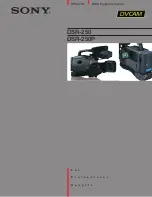
viii
Dew Formation
•
What is “dew formation”?
When cold water is poured into a glass, dew
drops form on the glass. This clinging of
water drops is called dew formation.
•
When dew forms in your camcorder.
Dew will gradually form on the head drum of
your camcorder and make the video tape
stick to the head. This causes damage both
to the head and the tape. When dew forms,
recording and playback may not function
properly.
Dew is likely to form in the following circum-
stances:
—When moving the camcorder from a cold
place to a warm place.
—When placing the camcorder in a cold
room which is then heated rapidly.
—When moving the camcorder outdoors from
an air conditioned room or car.
—When placing the
camcorder in the direct
path of air blowing from
an air conditioner.
—When placing the
camcorder in a humid
room.
•
“Dew” warning feature
If dew forms, the word “DEW” flashes on the
screen, and the power will automatically turn
off in approximately 10 seconds.
1
If “DEW” flashes, remove the cassette, leave
the cassette compartment open, and wait for
a few hours to allow the camcorder to
acclimatise to the surrounding temperature.
2
To use the camcorder again, turn on the
power after waiting for a few hours. Be sure
that “DEW” has disappeared.
3
Do not insert a cassette while “DEW” is
flashing; this may result in damage to the
tape.
4
Since dew forms gradually, it may take 10 to
15 minutes before the dew warning feature
engages.
•
How to prevent trouble.
When using the camcorder in a place where
dew is likely to form, allow the camcorder and
the video tape to acclimatise to the surround-
ings for about one hour.
For example, when bringing the camcorder
indoors after skiing, place it in a plastic bag.
1
Be sure to tightly seal the plastic bag
containing the camcorder.
2
Remove the bag when the air temperature
inside it reaches the temperature of the room.
Plastic bag












































